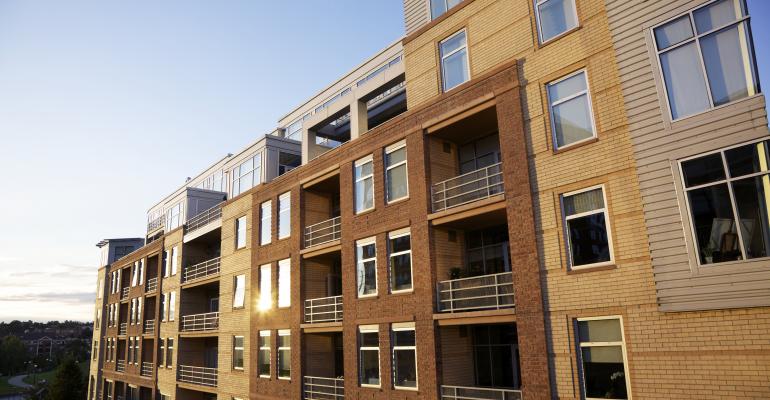Multifamily REITs have shown more appetite for new acquisitions this year.
“REITs have very much returned to the market,” says Andrew Rybczynski, senior consultant at research firm the CoStar Group.
After years of counting their pennies, REITs are once again major bidders for apartment assets. With their stock prices on the upswing, multifamily REITs are using the extra money to expand their portfolios. However, their overall acquisition volume is still below the levels seen earlier in the recovery.
“Any of these companies, if you ask them, they would love to buy more,” says Jon Miniman, portfolio manager with CBRE Clarion Securities. “They are trying to be disciplined from a buy perspective.”
REITs buying like it’s 2014
Year-to-date in 2019, REITs have spent $7.1 billion on apartment building acquisitions, according to CoStar data. That is enough to make this the biggest year for REIT apartment acquisitions since 2014. “All the big publicly-traded REITs are buying more this year than they did in 2018,” says Miniman.
The REITs are also net buyers—they spent 53 percent more money to buy apartment properties in 2019 than they have sold, according to CoStar. “REITs are primarily interested in acquiring,” says Rybczynski.
In 2019, about 4.4 percent of the multifamily acquisition volume in the U.S. was attributable to REITs. That’s almost twice the share of acquisition volume REITs were responsible for between 2015 and 2018, when they made 2.4 percent of all multifamily purchases. Earlier in the cycle, between 2012 and 2014, REITs represented 8.0 percent of multifamily acquisitions, according to CoStar.
“So, 2019 represents a bounce-back, and perhaps a harbinger of things to come,” says Rybczynski.
Prices on multifamily REIT shares were up by more than a quarter in November 2019 compared to the year before, says Miniman. The stock prices of many REITs are now 5 percent to 10 percent higher than the net asset value of the properties they own, he notes. That makes it a good deal for REITs to sell stock shares and buy new properties.
REITs trade up
With that in mind, REITs are still treading carefully when it comes to new acquisitions. “They are more likely to accrue the top-quality properties and sell their lower-quality assets,” says Rybczynski.
Three quarters (75 percent) of the money spent by REITs to buy apartment properties in this real estate cycle has been spent on properties in the top 20 percent of the apartment markets. Two-thirds (66 percent) of the properties sold were in these markets, according to CoStar.
“REITs returned to the tier one metros in a big way in 2019,” says Rybczynski. More than half (53 percent) of the money spent by REITs on apartment properties so far in 2019 has been in the top metros, according CoStar. Apartment investors overall have spent much less their money in the top markets—just a quarter (27 percent) so far in 2019.
Some REITs have found a sophisticated way to buy class-A properties in top markets at a discount. Many are buying new apartment properties that have not yet fully leased up. This can be a good deal for both the REITs and the project developers, who are often happy to move on to the next deal.
“Development equity capital has become a bit more precious—developers would rather get the money out,” says Miniman. “That [was] true throughout the cycle, but it’s especially true now.”





